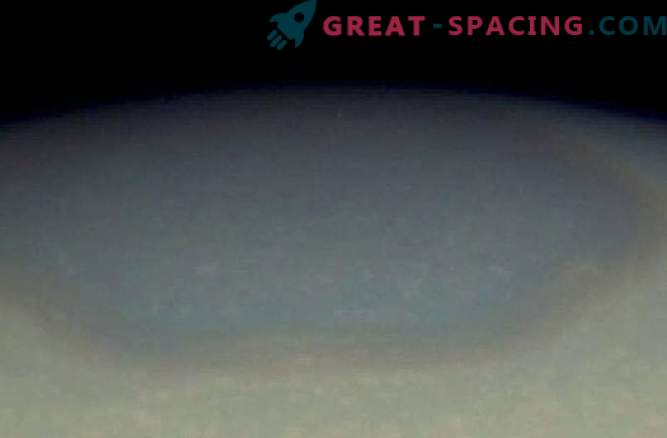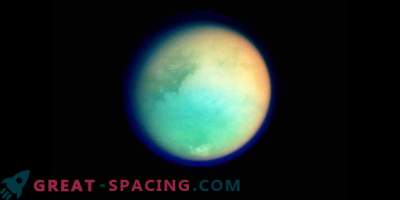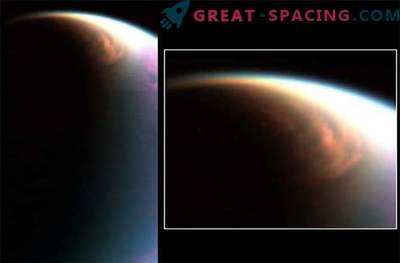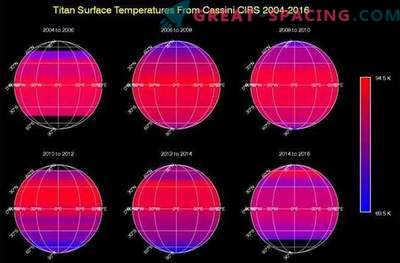
The new mystery was the change in shade on the “hexagon” of the gas giant.
Spectacular photographs taken by NASA’s Cassini spacecraft show interesting color changes over Saturn’s north pole. This event may be associated with seasonal changes and a huge hexagonal jet of the planet.
Images were taken by a Cassini wide-angle camera between 2012 and 2016. In the photos of 2012 we see a bluish halo over the pole Saturn, but those made in 2016 show the same area, but with a golden hue.
Saturn's North Pole has a unique hexagonal jet stream known as a “hexagon”, approximately 20,000 miles (32,000 km) wide. The vortexes of this hexagon flow extend through the planet’s atmosphere at a speed of approximately 200 miles per hour (322 km / h).
According to preliminary hypotheses, these color changes observed in the atmosphere over Saturn’s northern hemisphere may be associated with a jet stream. For example, a hexagonal vortex can act as a barrier and shield surrounding particles from entering the zone. In this case, the sky over the north pole of Saturn would have been cleared of haze or aerosols during the seven-year Saturnian winter. Such an assumption was advanced by NASA. Then, when the pole was exposed to sunlight, the production of haze would increase again. “Scientists are considering possible reasons for the transformation of the color of the area inside the north-polar hexagon on Saturn,” a NASA official said in a statement. “Color change is attributed to a change of seasons on the planet. In particular, the transition from a bluish color to a more golden hue may be associated with an increase in the production of photochemical fog (haze) when the north pole approaches the summer solstice in May 2017. ”
Photochemical haze, or aerosols, are created as a result of reactions between the atmosphere and the sun's rays. The equinox on Saturn occurred in August 2009. And since then the planet has been exposed to continuous sunlight. During this time, photochemical aerosols managed to accumulate in the sky over Saturn’s north pole, creating a golden haze that was observed today.
Officials reported that there are other factors (including changes in solar heating and wind patterns) that could cause a shift in the planet’s atmospheric circulation. The report says that these factors may also play a role in the observed color change.
The Cassini-Huygens spacecraft has remained in orbit with Saturn since 2004, and its mission is expected to end in September 2017. Researchers will continue to study the data collected by the mission to better understand this curious color change mechanism.











































